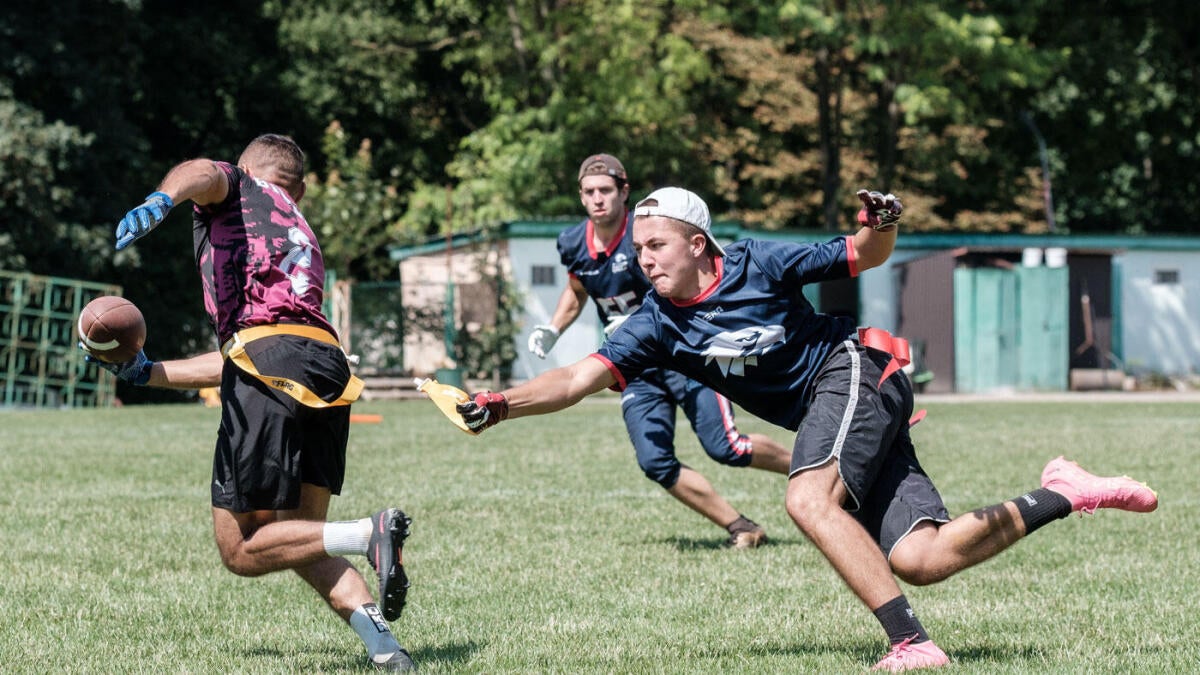The prospect of NFL players participating in Olympic flag football at the 2028 Los Angeles Games stands at a fascinating crossroads, blending boundless opportunity with palpable challenges. This development shines a spotlight on the NFL’s strategic ambitions and raises critical questions about player welfare, team dynamics, and the league’s future on the world stage.
NFL’s Quest for Global Growth Through Flag Football
For years, the NFL has wrestled with the challenge of expanding American football’s global reach. While domestic fervor for the sport remains high, attempts to replicate this passion abroad fall short of the sweeping enthusiasm enjoyed by sports like soccer or basketball. Flag football’s Olympic introduction offers a fresh, promising gateway—its swift pace and non-contact rules strip away some barriers associated with tackle football, making it more inviting for international audiences unfamiliar with the full-contact variant.
The timing couldn’t be better. Aligning with the 2028 Games in Los Angeles, this opportunity dovetails neatly with the NFL’s ongoing international initiatives, from London games to Mexico City expansion. The Olympic stage could act as a catalyst, accelerating youth participation and growing the sport’s cultural foothold worldwide in ways previously unimaginable for the league.
Ownership’s Calculated Caution: Protecting Assets Over Exposure
Despite the gleaming potential, NFL team owners and general managers are apprehensive—a natural stance given the stakes. The core concern orbits around player safety and availability. Even though flag football reduces physical collisions, it is far from risk-free; injuries sustained could derail a player’s NFL season, offering no tangible advantage to their team.
Brian Gutekunst, the Green Bay Packers’ GM, encapsulates this caution. His worry is not merely theoretical; real precedent exists. Flag football has, in fact, led to serious injuries such as former player Robert Edwards’ knee injury, underlining the genuine risks. For owners investing hundreds of millions in their rosters, the idea of star players getting injured in a side event with limited direct benefit is understandably unsettling.
To address these concerns, the NFL is exploring contractual protections, including salary cap relief and comprehensive injury coverage. Measures such as mandatory standards for Olympic medical staff and playing conditions also aim to create safer environments. Yet skepticism remains about whether these can fully neutralize the risk without diluting the competitive spirit or violating the essence of the sport.
Players’ Olympic Dream Versus Practical Reservations
On the flip side, player enthusiasm glows brightly. The chance to become Olympians and showcase their skills on a global platform aligns deeply with athletes’ personal and professional aspirations. Representing their country carries immense pride, and the potential to boost flag football’s profile worldwide offers an attractive avenue beyond NFL turf.
Commissioner Roger Goodell’s vocal support and the league office’s public encouragement reflect this positive momentum. Still, the ultimate decision lies with owners, who hold the threshold to approve or block NFL player participation. Early signals from influential figures like Jerry Jones hint at tentative openness, but the collective vote will reveal how risk tolerance balances against growth ambitions.
Navigating Scheduling Complexities and Team Strategy
The Olympics’ mid-July timeframe presents a logistical silver lining. Occurring just before or around NFL training camps, it theoretically allows players a window to participate without grossly conflicting with regular season preparations. However, seamless integration demands precise coordination concerning player rest, recovery, and contractual mandates.
Beyond timing, roster construction for Olympic flag football introduces strategic puzzles. Rumors of limiting NFL players to one per national team add layers of complexity, forcing tough choices about who represents the sport on this stage. The allure of names like Patrick Mahomes or Tyreek Hill participating hinges on these practical decisions, influencing the event’s star power and, consequently, its global reach.
Player Safety: The Non-Negotiable Core Concern
Player safety underpins every hesitation and policy debate. Although flag football reduces violent contact, the possibility of injuries persists. The NFL’s recent efforts—which span improved concussion protocols, enhanced helmet technology, and revised gameplay rules—demonstrate a commitment to player health, often within the confines of tackle football.
The Olympic environment, however, lies outside these familiar safeguards. Introducing a new competition format, officials, and playing conditions inevitably introduces unfamiliar risks. An injury here reverberates beyond individual careers—it impacts team performance, salary cap structures, fan enthusiasm, and the broader NFL economics.
While proposed protections such as injury guarantees and salary cap credits help de-risk participation, whether these measures sufficiently address ownership anxieties remains unresolved.
Strategic Outcomes: Growth Versus Caution
The NFL’s path forward carries high stakes. Should owners greenlight player involvement, flag football at the Olympics could become a launching pad for global expansion, sparking youth engagement, expanding merchandise sales, and amplifying media presence worldwide. The visibility and prestige of the Olympic platform could redefine football’s international status.
Conversely, if concerns over injury and disruption lead to restrictions or outright bans on player participation, the league may forfeit a rare chance to shine on an iconic global stage. Limited involvement of marquee NFL players risks diminishing the sport’s Olympic debut impact, slowing momentum in efforts to cultivate international fanbases.
Finding the Balance: A Moment of Reckoning
Emerging from this debate is a classic tension—aspiration versus caution. The ambitions to amplify football’s global appeal through the Olympics must be carefully weighed against the imperative to shield valuable players and preserve competitive integrity.
Success demands a collaborative approach, with owners, general managers, coaches, players, and league officials converging on agreements that honor both growth initiatives and health priorities. The 2028 Olympics represent not only an opportunity but a test: Will the NFL seize this chance to broaden football’s horizons, or will prudence stifle its international leap?
How the league navigates these challenges could define the trajectory of American football for decades—whether as a sport confined largely to domestic borders or as a dynamic, global contender in the world’s greatest sporting arena.











